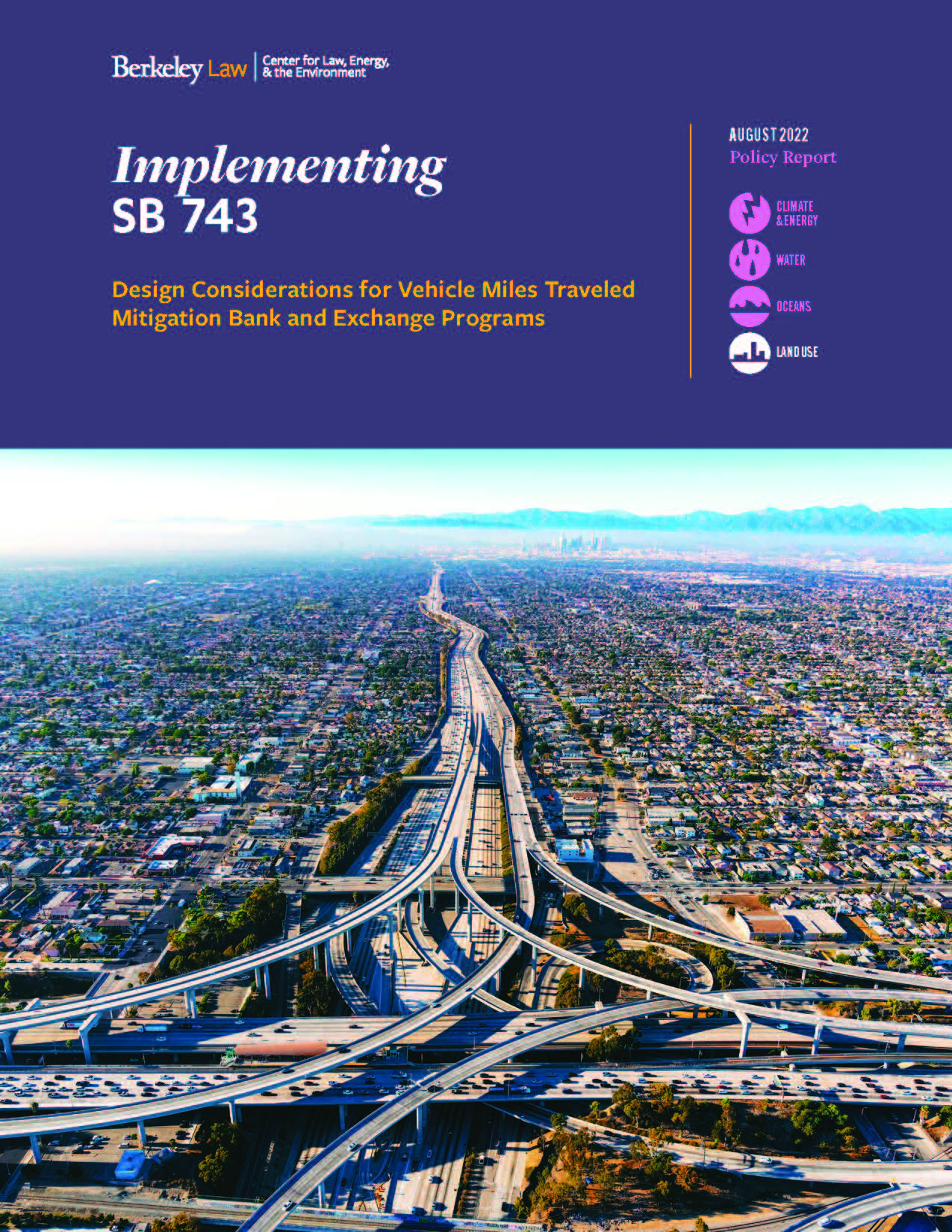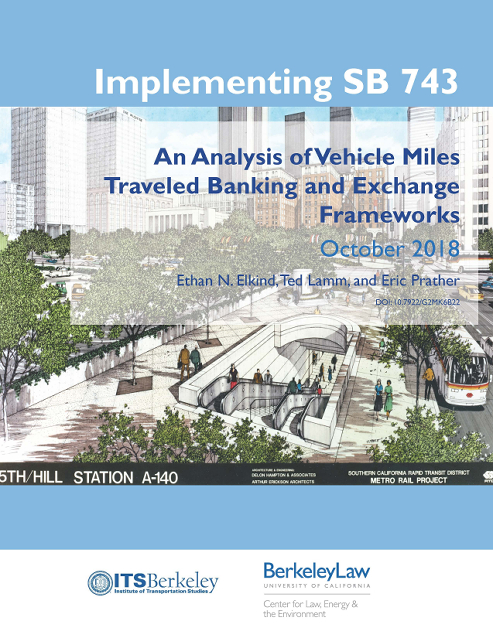Under the California Environmental Quality Act (CEQA), government agencies and developers are required to mitigate (where feasible) the environmental impacts of new discretionary projects, including impacts to transportation. Traditionally, transportation impacts were evaluated in terms of level of service, which focuses on roadway congestion.
Senate Bill 743 (Steinberg, 2013) called for a new transportation impact measure that promotes greenhouse gas (GHG) emission reduction and multimodal transportation. In 2018, state leaders updated the CEQA guidelines to recommend VMT as the preferred impact measurement. VMT focuses on total vehicle trip-miles generated by a new project regardless of where they occur or how much traffic they cause.
Mitigating VMT impacts of new projects creates the opportunity—and potentially the need—to conduct mitigation at locations other than the development site. If properly conducted, offsite mitigation could maximize flexible and locally appropriate transit, active transportation, and density investments. To carry it out, CLEE and others have proposed “bank” and “exchange” programs to manage these capacities. CLEE’s 2022 report, Implementing SB 743: Design Considerations for Vehicle Miles Traveled Bank and Exchange Programs, advanced these proposals by providing guidance for state, regional, and local leaders to develop plans for VMT mitigation bank and exchange programs that build on their existing environmental mitigation efforts. It presented recommendations on program design elements including geographic scope and administrative design, project prioritization and selection, pricing and fiscal matters, mitigation monitoring, additionality, and equity.
In a new research project, CLEE is building on its existing research to provide additional guidance to state and local governments on the best framework, practices, and protocols to implement VMT and GHG mitigation banks and exchanges. CLEE is investigating challenges and opportunities to developing these programs by:
- Analyzing proposed and existing designs for banks and exchanges throughout California;
- Conducting expert interviews with a range of stakeholders; and
- Assessing considerations of project costs, administrative costs, benefit quantification, additionality, and equity.
Based on its research and expert interview findings, CLEE will identify a set of best practices fort he development and implementation of VMT and GHG mitigation bank and exchange programs. By evaluating emerging practices and key considerations from programs around California, this new research project will assess progress to date and move toward consensus on program design for the future.
Learn more about the project here.
Download the 2022 report:

Implementing SB 743: Design Considerations for Vehicle Miles Traveled Bank and Exchange Programs (August 2022)
Download the 2018 report:
Implementing SB 743: An Analysis of Vehicle Miles Traveled Banking and Exchange Frameworks (October 2018)
Webinar (2018):
Hosted by CLEE’s Ethan Elkind and Ted Lamm, and featuring Senior Planner Chris Ganson and Senior Counsel Jeannie Lee of the Governor’s Office of Planning and Research.
Contact Ethan Elkind, Ted Lamm, or Elissa Walter for more information.